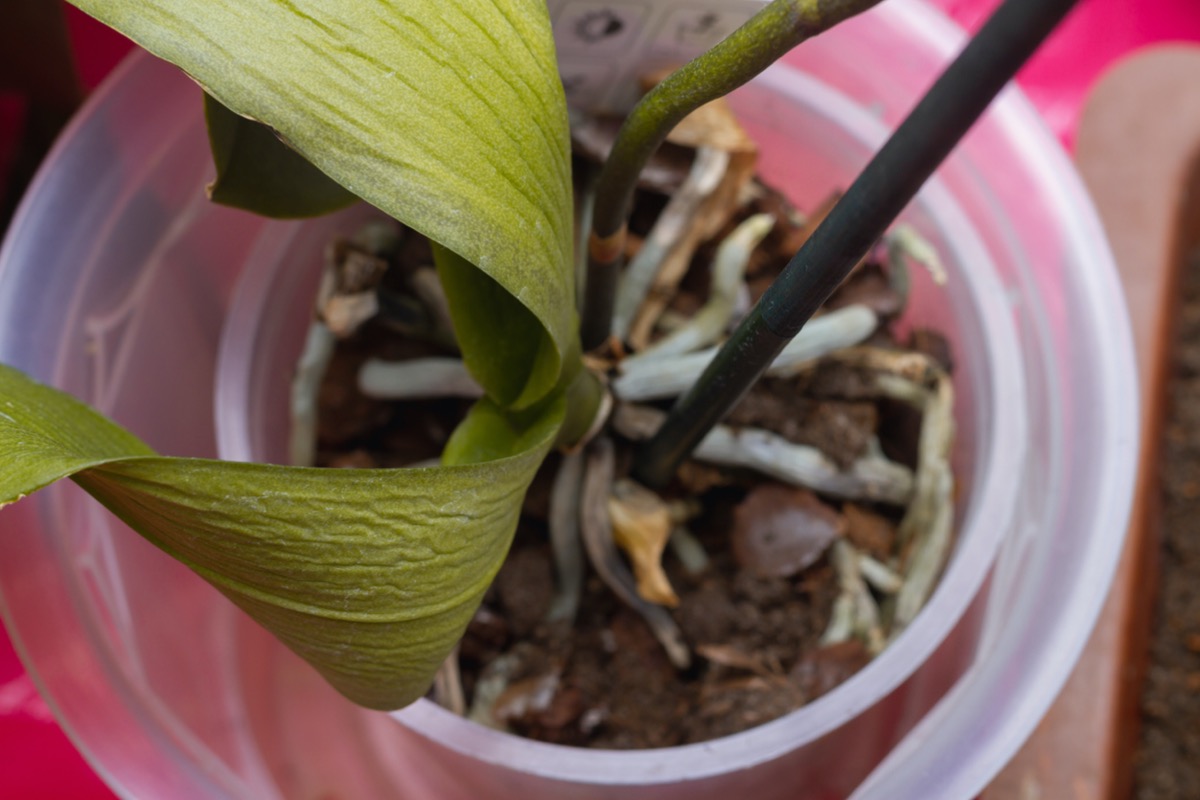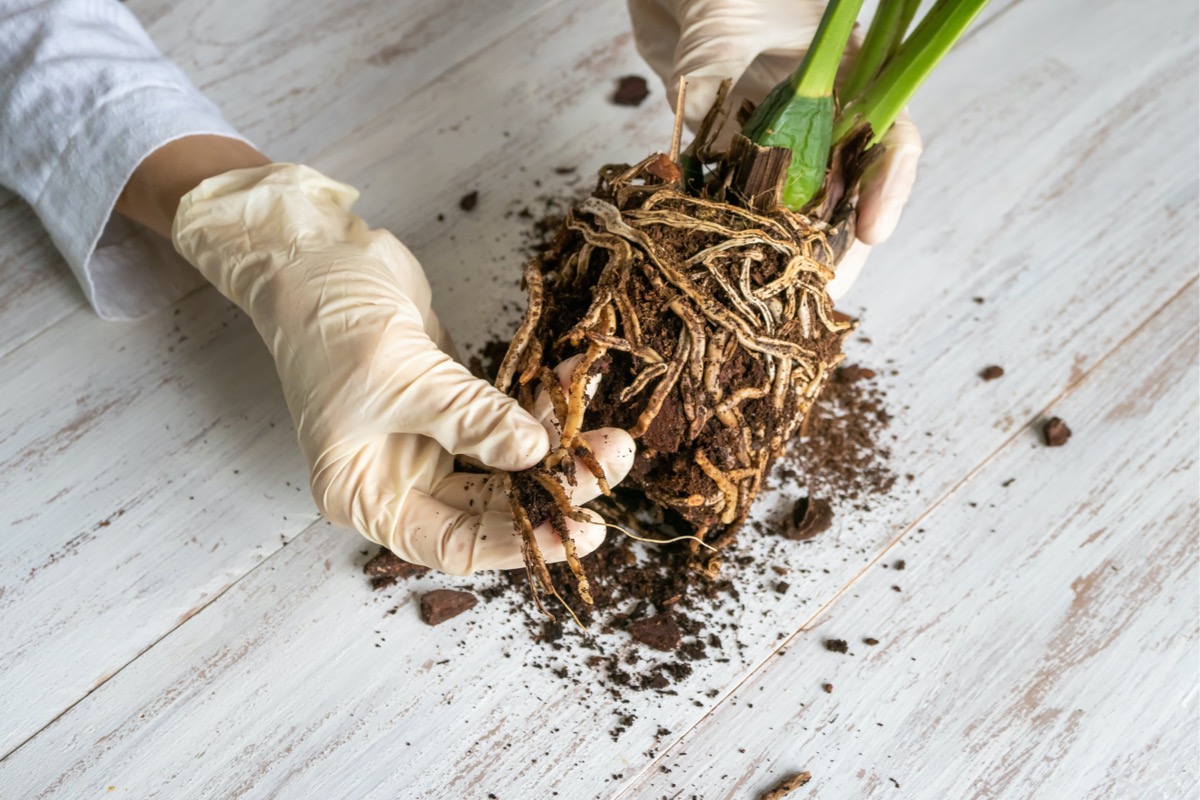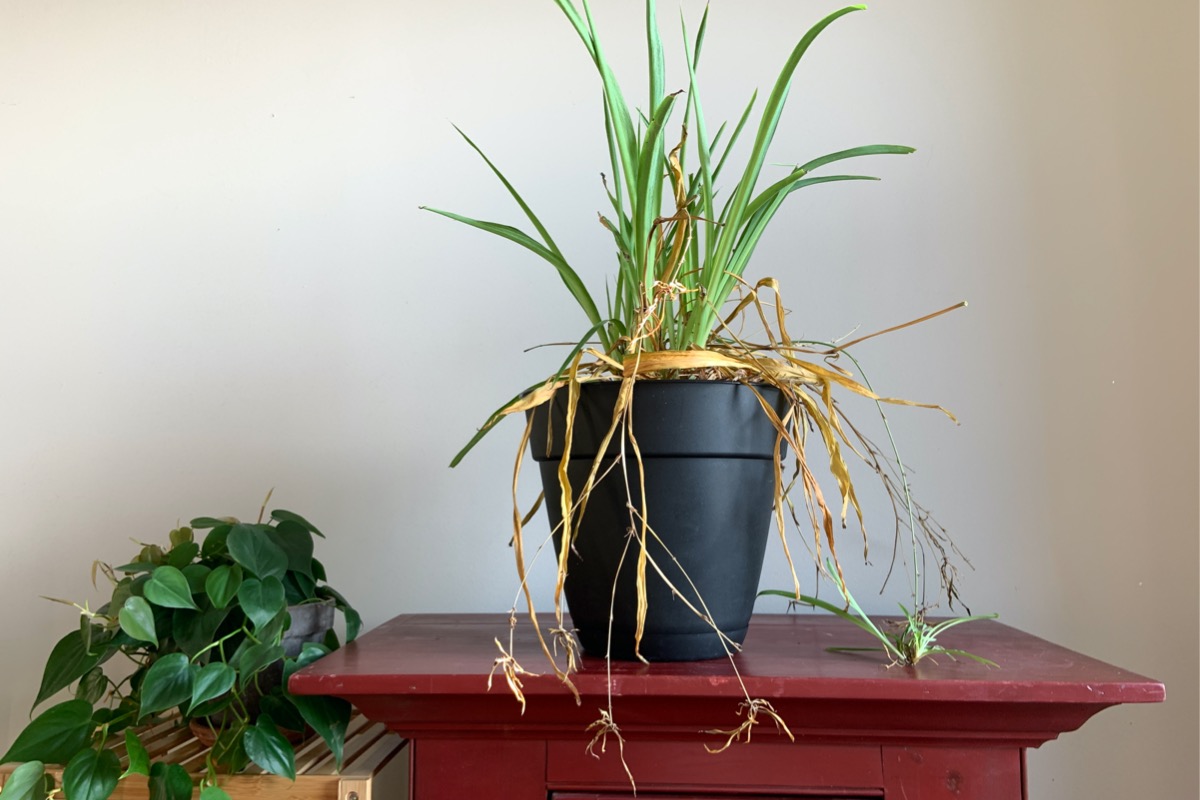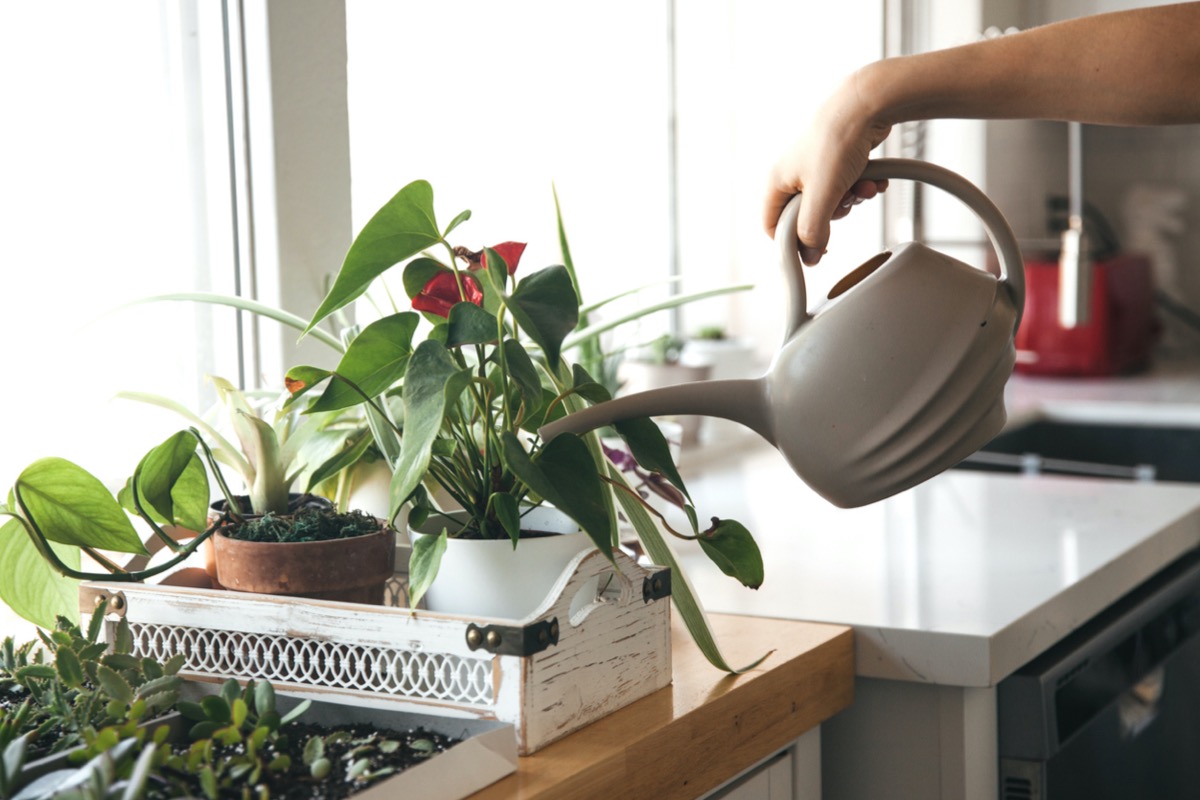

We may earn revenue from the products available on this page and participate in affiliate programs. Learn More ›
Q: I’ve heard that root rot is the primary cause of houseplant deaths. My plant is wilting, but I can’t tell if that’s a sign of underwatering rather than getting too much water. What does root rot look like?
A: Unfortunately, the signs of root rot, which include wilting along with discoloration and/or dropping of a plant’s lower leaves, do look similar to the symptoms of underwatering. There is a reason for that: A plant with rotted roots can’t take up water. Therefore, it too might die of thirst even though its soil is soggy.
What does root rot look like? Remove your plant from its pot and examine its roots. If they look dark brown and mushy rather than firm and white or tan as they should be, your plant probably is suffering from root rot.

What is root rot?
According to Wisconsin Horticulture’s Division of Extension, “Root rot is a general term that describes any disease where the pathogen…causes the deterioration of a plant’s root system.” Because pathogens can be in the form of bacteria, fungi, or other organisms, root rot isn’t just one disease but a plant problem with many causes.
However, as with other maladies, these rots do the most harm to victims whose defenses already are lowered by poor conditions. So, they most often seem to strike houseplants in the appropriately described “dead” of winter when those plants already may be suffering from low light, low humidity, and more water than they can assimilate.
Related: The Best Plants for Every Room of the House
What causes root rot?
Root rot is caused by the previously mentioned pathogens, especially fungi and parasitic oomycetes, some of the most common being Fusarium, Phytophthora, Pythium, and Rhizoctonia. Because those “baddies” prefer wet conditions, they most often attack plants that have sat for too long in soggy soil, either due to overwatering or to a lack of drainage holes in their containers.
The root cause of root rot generally is stagnation brought about by such gardening mistakes, which can doom succulent plants such as jades and moth orchids that don’t require much water but are flooded with an overabundance of it from their caring plant parents. Money tree root rot is also common.
What does root rot look like?
Although some root rot symptoms mimic those of dehydration, others will indicate that something is rotten in the state of Denmark (or your dendrobium).
- One of the earliest signs of root rot is wilt, most frequently in the plant’s lower leaves, which might exhibit brown tips as well. Those leaves will eventually wither and fall.
- Leaves may also take on colors not characteristic of their species, such as yellow or red. Such hues often indicate nutrient deficiencies since the plant no longer is taking up much of anything through its decaying roots.
- Inadequate water uptake often will cause the plant to stop growing, too, so it may appear stunted. Keep in mind, though, that many houseplants don’t make new foliage during winter anyway, with it being their season of rest.
- If you remove the plant from its pot and gently wipe some soil away, you are likely to see dark brown roots rather than the white or tannish ones that should be there. Should those brown ones feel mushy rather than firm, they are definitely rotting.
- You also might smell a musty odor similar to that of mushrooms or the sulfuric stench of stagnant water. The scent of decay may be a good sign in your compost pile but not in your houseplants!

How to Treat Root Rot
When contemplating how to fix root rot, keep in mind that there is no cure once all of your plant’s roots have rotted. Should you see healthy roots left, however, you might be able to save your plant with the following root rot treatment.
- Remove the plant from its pot and place it in a bucket or dishpan. Run a gentle stream of lukewarm water over its roots until all the soil has been washed away from them. Discard that old soil.
- After swabbing the blades of pruning shears or garden shears with rubbing alcohol to sanitize them, prune out all roots that look brown and mushy, leaving only the light-colored ones that still feel firm to the touch. Make your cuts above the rot to eliminate all of it. If you have had to remove a large percentage of the roots, prune back the plant’s foliage to a proportional size.
- Should you plan to reuse the old pot after you have cleaned and rinsed it, sanitize it by dunking it in a mixture of one part bleach to nine parts water and leaving it in that solution for at least 10 minutes. Then, rinse it well again before returning your plant to it.
- Cover your pot’s drainage holes with a coffee filter rather than with gravel, and fill the coffee filter with fresh light and fluffy potting mix, choosing cacti mix if the plant is a cactus, succulent, palm, or citrus tree. Don’t use garden soil, which is more likely to harbor fungi.
- After repotting your plant, you may want to water it with one of the vitamin formulas recommended for stressed plants. However, avoid fertilizing it until it has completely recovered and begins putting out new growth again
Related: What Is “Bright, Indirect Light,” Anyway?
How to Prevent Root Rot
Instead of watering all your plants on a preset schedule, check the soil of each one. Water the most moisture-loving plants such as ferns only when the surface of their mix is dry. Wait until that soil is dry 1 or 2 inches down to water plants such as succulents, which prefer more arid conditions.
Grow your cacti, succulents, palms, and citrus trees in one of the faster-draining mixes made especially for them rather than in standard potting mix. If you tend to overwater, you might want to place your plants in terra-cotta pots rather than plastic ones, since the more aerated soil in terra cotta dries faster.
Avoid pots that have no drainage holes, since excess water can’t escape from the soil. And don’t place your plants in containers too large for them, since that can cause their soil to stay soggy.

Final Thoughts
Good plant care habits also help prevent root problems. Always water with lukewarm rather than cold water and avoid fertilizing houseplants during winter, since chilly conditions or excess salts in the soil leave them more vulnerable to rot. Repotting generally should be done in spring rather than winter, and you should be careful not to damage your plants’ roots in the process, as such wounds can admit disease.
If you see fungus gnats flitting around your indoor garden, try to control them, since they may spread fungi from one pot to another. Avoid reusing old potting mix, since spores often linger in it for a long time, and always empty the saucers beneath your plants’ pots soon after you have watered them.
Related: 14 Symptoms of an Unhappy Houseplant (and How You Can Treat Them)
